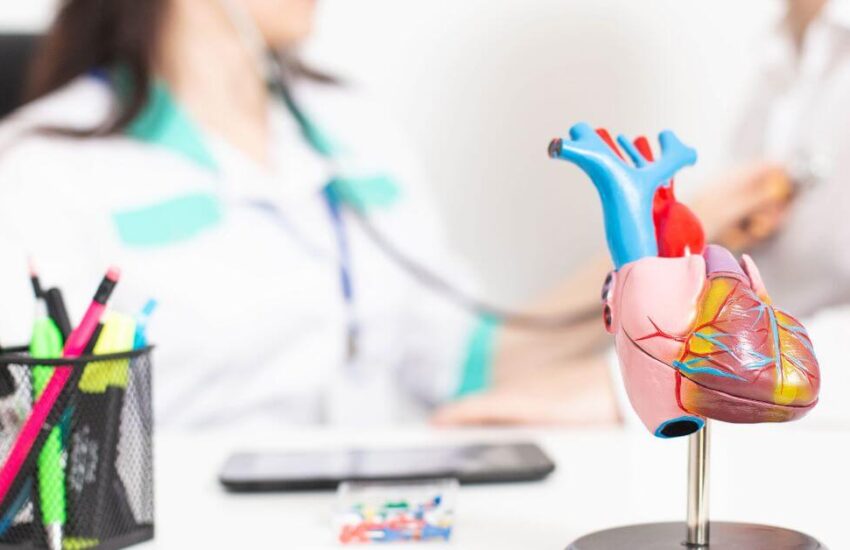What is referred to as triple vessel disease?
Extreme coronary artery disease is known as triple-vessel disease (CAD). CAD develops when the major blood arteries supplying the heart become damaged or unhealthy. Inflammation and plaque buildup (also known as cholesterol deposits) are the two main culprits in coronary artery disease.
Although smaller plaque deposits would not affect blood flow to the heart, bigger plaque deposits can severely reduce or obstruct blood flow to the heart. Chest pain, shortness of breath, or even a heart attack could result from such blockages.
Triple vascular disease affects all three of the major coronary arteries, although most cases of CAD affect only one (left anterior descending, left circumflex, right coronary artery). Also affected is the contractile strength of the left ventricle. Consulting a heart specialist doctor in Coimbatore at the earliest can reduce the severity of the condition.
The signs that might indicate the triple vessel disease:
Triple Vessel Disease has many symptoms with coronary artery disease.
- Chest pain
- Shortness of breath
- Fatigue
- Confusion
- Heartburn or choking feeling
- Nausea or vomiting
- Discomfort or pain in the upper torso (the back, the jaw, the neck, the arms, and the shoulders).
- Dizziness or light-headedness
- Rapid or irregular heartbeat
If you notice the above symptoms, reach out to the hospital to get triple vessel disease treatment.
What are the causes of triple vessel disease?
Atherosclerosis, or the hardening or blockage of the arteries, is a common cause of triple vessel disease. Plaque, composed of cholesterol, calcium, or fatty deposits, builds up inside the artery walls and leads to atherosclerosis.
Reduced blood flow to heart tissue and potentially harmful effects on arterial tone and function are the direct results of the physical restriction or occlusion caused by these plaques. Because of this diminished blood flow, the heart’s tissue is deprived of oxygen and nutrients it needs to function normally. A heart attack can develop if the heart’s energy needs are not satisfied by the blood supply.
The major organs are not immune to having atherosclerosis develop in their arteries. Blood clots can form if plaque fragments break off and enter the bloodstream. Myocardial infarction (heart attack) and stroke are possible outcomes if the ailment is not treated.
Triple vessel disease can be caused by a number of different causes, but the most prevalent risk factors are things like a poor diet, obesity, a lack of activity, smoking, age, diabetes, and family history.
The processes involved in detecting triple vessel disease:
Diagnosing CAD and triple vessel disease requires a battery of specific testing. These are the most typical:
Electrocardiogram:
An ECG is a test that monitors the electrical signals from your heart as they flow through your body. This may be done in a clinic or hospital setting, or the patient may be fitted with a Holter monitor, a portable device that records the patient’s electrical signals over a long period of time while they go about their regular lives.
Echocardiogram:
To conduct an echocardiography, an ultrasound device is used. The cardiac tissue is photographed during the examination, allowing the doctor to see if all of the heart’s chambers and valves are in good working order and making their usual contributions to the heart’s pumping activity.
CT Coronary angiogram:
For better visibility of calcium deposits within the arteries that impede blood flow and may cause blockages, a computed tomography (CT) examination of the heart may be useful. The coronary artery disease specialists can assess blood flow throughout the heart’s vasculature during this exam and may decide to use contrast if necessary.
The various triple vessel disease treatment that include:
Percutaneous coronary intervention (PCI):
An alternative to open heart surgery, percutaneous coronary intervention (PCI) involves the insertion of a stent, a tiny device used to prop open blood arteries in the heart that have been restricted due to plaque development.
What is involved in the procedure?
A catheter can be placed into a vein in the groin or a vein in the arm.
The catheter is guided through the blood arteries and into the heart, past the constricted coronary artery, using fluoroscopy, a specialized form of X-ray imaging.
Once the tip has been positioned, a balloon covering the stent is inflated.
The stent is expanded and the plaque is compressed by the balloon’s tip.
Deflating the balloon and removing the catheter are the final steps after plaque has been crushed and a stent has been placed.
The stent remains implanted in the artery, maintaining unrestricted blood flow.
Coronary artery bypass grafting (CABG):
An operation called coronary artery bypass grafting redirects blood flow to parts of the heart that aren’t receiving enough oxygen and nutrients. You may feel and function better after this surgery on your heart.
The procedure that involves:
Depending on the patient’s condition, coronary bypass surgery might take anywhere from three to six hours and is performed under general anaesthetic. The location and severity of your cardiac blockages will determine the optimal number of bypasses for you.
A breathing tube is placed down the patient’s throat under general anaesthesia. During and immediately after surgery, you will be dependent on a ventilator, to which this tube will attach.
Many bypass procedures for coronary artery disease require a lengthy incision in the chest and the use of a heart-lung machine to maintain blood and oxygen flow during the procedure. The procedure is known as coronary bypass surgery on the pump.
Is triple vessel disease serious?
The most severe form of sCAD is triple-vessel disease (TVD), which occurs when there is considerable stenosis in any three of the major epicardial coronary arteries.
